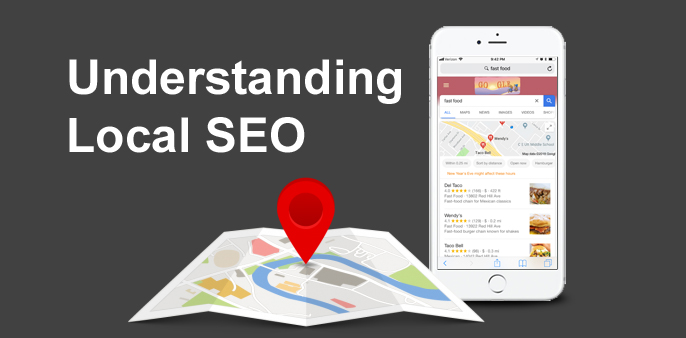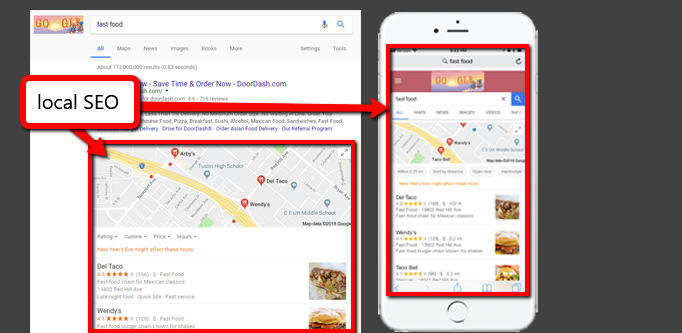
SEO has been around for many years now and most business owners understand they should care about SEO. However, a more recent trend is the term “Local SEO”, so how does Local SEO differ from traditional SEO? Understanding Local SEO starts with knowing the basic theory of traditional SEO. For more seo services and guidance visit websites like Victorious.
What is SEO
SEO at its simplest form is getting your website to show up on page one of Google search results. So how does it actually work? There are typically two areas of SEO:
On-site SEO
This refers to all tasks that can be done to your website to optimize it for search engines. This includes:
- Site architecture
- URL Structure
- Navigation
- Meta Titles & Meta Descriptions
- Page content
- Internal linking
- Image file names
- Image alt tags
- XML Site map
- Robots.txt file
Most of these tasks are usually done once every so often, but things like page content should be optimized on a regular basis. Each of the above topics deserves its own blog post to even begin scratching the surface of SEO strategy, but the list should give you an idea of what work goes into on-site SEO.
Off-site SEO
As the name suggests, off-site SEO refers to all tasks that can be done off of your own website to optimize your websites search engine ranking. Off-site SEO in the past typically meant one thing, building back links from other popular websites pointing back to your site. An analogy I like to use in explaining off-site SEO is thinking back to High School. Back in High School it doesn’t matter if you have a ton of unpopular kids talking about you, the only thing that would make you popular is having a few popular kids talk about you. Likewise, it doesn’t matter if you build thousands of back links from unknown websites that themselves don’t have high ranking. Yet, if you can get a few links from highly reputable top ranking sites, you instantly have search engine credibility.
Traditional SEO is all about getting your web pages to rank on Google for specific keyword phrases. This means there are only ten spots for any given keyword phrase because it really only matters being on the first page of Google results.
Understanding Local SEO
Local SEO is similar to traditional SEO, but it is search engine ranking at the local level. This has become more relevant in recent years because of the growing transition to mobile search. Most desktop browsers are starting to default to “near me” search results, assuming you have location services enabled (most are by default). Mobile devices on the other hand default to “near me” searches, even if you don’t add “near me” into your search query.

This is a key factor to consider when understanding Local SEO because “Local SEO” really means “Mobile SEO”. Today, many websites have over 50% of their traffic coming from mobile devices, many are even over 70%. So how does Local SEO differ from traditional SEO? Like traditional SEO, Local SEO also can be broken down into on-site vs off-site SEO.
On-site Local SEO
On-site SEO is basically the same tasks, just optimize for local landing pages. This means setting up a “Locations” or “locator” page then building out individual landing pages for each of your business locations. If you have a physical store, then you will want a landing pages for each physical location. If you are a service provider then you will want at minimum one landing pages per city that you serve. This way your local landing page will rank higher for each of their respective locations. You can do this manually or you can leverage a third party service such as Yext or Rio SEO to automate this process.
Off-site Local SEO
In addition to traditional back linking, off-site Local SEO also includes optimizing your business on the major location directories such as Google My Business, Bing Places for Business, Yelp, Facebook and many more.

Step 1 is to setup or claim your locations as a business on each of these directories, then you have to optimize them for specific keyword phrases which can differ per location. Again, you can do this manually or you can leverage a third party service such as Yext or Rio SEO to automate this process.
Who should care about Local SEO?
If you have physical business locations or if you are a service provider that targets a specific geographic location, you should at least try understanding Local SEO. It is definitely a key factor in growing your business. Businesses that don’t serve a specific location are the only exceptions to the rule, such as Amazon or ebay.
How do I optimize local SEO for my business?
If you want to do it yourself, feel free to use the above check list as a starting point. I’ve spent the last 9 years mastering SEO, so just know it does take time to learn and execute. If you want to expedite this process, hire a SEO expert that understands both traditional SEO and Local SEO.
- COVID-19 Has Forced Many Business To Ask, How Do I Start Selling Online? - May 25, 2020
- Applying AI Technology To Taco Bell - January 25, 2020
- ONWARD 2018 Taco Bell Brand Award - November 11, 2018


2 Responses
3conversely
[…] clindamicina 600 mg[…]
clindamicina 600 mg
Comments are closed.